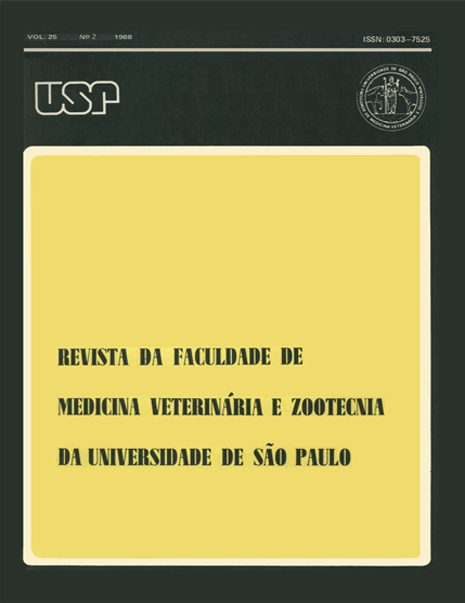Potentiality of Elephant grass (Pennisetum purpureum, Schum), Mineiro and Vruckwona cultivars, as plants for ensilage
DOI:
https://doi.org/10.11606/issn.2318-3659.v25i2p285-296Keywords:
Silage, Elephant grass, Soluble carbohydrates, Formic acid, FormaldehydeAbstract
The potentiality of Mineiro and Vruckwona cultivars, Elephant qrass (Pennisetum purpureum, Schum), was evaluated as plants for ensilage. After the cutting at 75 days of development, the grasses production was measured. Before the ensilage, they were subjected to 4 treatments: withering under the sun for 8 hours and addition to the fresh and triturated material of 0.5% formol (40% formaldehyde), 0.5% formic acid (85%) and 0.2% "Viher" solution (70% formol + 26% formic acid + 4% water). Vruckwona cultivar showed higher green matter production ( 97.2 t/ha) than Mineiro (77.2 t/ha), being 18.67 and 16.4 6% the levels of dry matter, respectively. Withering was the only treatement that increased dry matter level to 26.33%, whereas the other averaged 13.68%. Uruckwona cultivar showed higher levels of soluble carbohydrates (10.79%), glucose ( 3.96%) and fructose (4.44%) than Mineiro (9.32, 3.08 and 3.35%, respectively). Formic acid provided the highest buffering capacity for chloridic acid (33.82 e. mg. HCL/100 g DM) being lower for the other treatments (17.99 e. mg.).Downloads
Download data is not yet available.
Downloads
Published
1988-09-15
Issue
Section
ZOOTECHNICS
How to Cite
Potentiality of Elephant grass (Pennisetum purpureum, Schum), Mineiro and Vruckwona cultivars, as plants for ensilage. (1988). Revista Da Faculdade De Medicina Veterinária E Zootecnia Da Universidade De São Paulo, 25(2), 285-296. https://doi.org/10.11606/issn.2318-3659.v25i2p285-296


